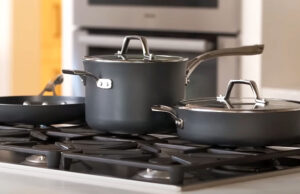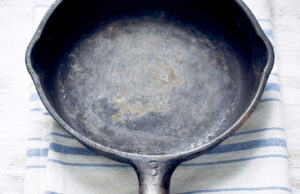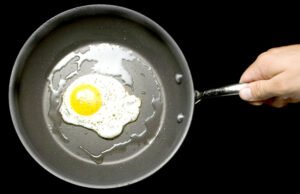As an Amazon Associate, I earn from qualifying purchases at no extra cost to you.
Can You Put Brita in Dishwasher? A Complete Guide
You probably want to keep your Brita pitcher or bottle clean without any trouble. Maybe you wonder, can you put Brita in the dishwasher? You are not alone! Many people ask this because cleaning a Brita filter or pitcher well is important for fresh-tasting water. In this article, I will give you a clear answer: No, you should not put the Brita filter in the dishwasher. But I will also share how to clean your Brita pitcher and bottle safely and easily. Keep reading to learn everything you need to know.
Check What Parts of Your Brita Can Go in the Dishwasher
When you first get a Brita pitcher or bottle, you want to keep it clean but not break anything. The main thing is that the Brita filter itself should never go in the dishwasher. The filter has special charcoal and other materials that will get ruined if washed with heat and water pressure.
However, some parts of the pitcher or bottle, like the lid and pitcher body, may be dishwasher safe. You should always check the instructions or the bottom of the pitcher. Usually, Brita pitchers say “top rack dishwasher safe” on the plastic parts, which means you can put those parts in the dishwasher but only on the top rack where the heat is less strong.
If you have a Brita water bottle, the plastic lid and the body might also be dishwasher safe on the top rack. But the filter should always be taken out and thrown away before cleaning.
If you put parts that are not dishwasher safe in the dishwasher, they can melt, warp, or crack. This can cause leaks and make your pitcher useless. So, never take a risk—look at your Brita parts and follow the guide.
If you are not sure about a part, wash it by hand with warm water and mild soap. This is safer and will keep your Brita lasting longer.
- Brita filter should never go in the dishwasher
- Some lids and pitcher bodies may be dishwasher safe on the top rack
- Always check the instructions or plastic markings on your Brita
- Parts not safe for dishwasher can melt or get damaged
- When in doubt, wash by hand with warm water and soap
Why You Should Never Put the Brita Filter in the Dishwasher
The Brita filter is the most important part of your water pitcher or bottle. It removes chlorine, heavy metals, and other bad stuff from tap water to make it taste better and safer. But the filter is delicate and full of special materials inside.
When you put a Brita filter in the dishwasher, the heat and water pressure will destroy it. The charcoal inside can break apart or get wet in the wrong way. The filter will stop working properly and won’t clean your water anymore.
Besides, the filter can clog the dishwasher or release particles that are not good to have in your dishwasher or dishes. So, even if it looks like a good idea, never put the filter in the dishwasher.
Instead, replace your Brita filter every 40 gallons or about two months. This keeps your water clean and fresh.
If you want to clean your filter gently, just rinse it under cold water to remove loose debris. But do not soak or wash it with soap.
- Brita filter contains delicate charcoal and other materials
- Dishwasher heat and water damage the filter and stop it from working
- Filter can clog or damage the dishwasher
- Always replace the filter every 40 gallons or 2 months
- To clean, gently rinse the filter with cold water only
How to Wash Your Brita Pitcher or Bottle Safely by Hand
Cleaning your Brita pitcher or bottle is easy when you know the right way. Start by taking out the filter and throwing it away if it is old. Do not try to wash the filter with soap or put it in the dishwasher.
Use warm water and mild dish soap to wash the pitcher or bottle. You can use a soft sponge or cloth. Avoid anything rough or sharp that can scratch the plastic.
Clean the pitcher lid well because it touches your water a lot. You can use a small brush or toothbrush to clean the hard-to-reach areas on the lid and spout.
Rinse everything well with clean water to remove soap. Let the parts air dry completely before putting the filter back in.
For the water bottle, you can also clean the straw or mouthpiece with a small brush. This keeps your water fresh and stops germs from growing.
If your pitcher or bottle smells bad, soak it in a solution of one part white vinegar and three parts water for 15 minutes. Then rinse it well.
- Remove and replace the filter before cleaning
- Wash pitcher or bottle with warm water and mild soap
- Use soft sponge, avoid scratches
- Clean lids and small parts with a brush or toothbrush
- Rinse well and air dry completely
- Use vinegar soak for bad smells
What to Do if Your Brita Has Mold or Bad Smell
Sometimes, even with regular cleaning, your Brita pitcher or bottle can get mold or a bad smell. This usually happens when the pitcher stays wet for a long time or is not cleaned often enough.
If you see black or green spots inside your pitcher or bottle, this could be mold. Mold can be harmful if you drink water from a moldy pitcher. It’s important to clean it well or replace it.
To clean mold, start by throwing away the old filter. Then, wash the pitcher or bottle with warm soapy water and scrub hard to remove the mold spots. You can use vinegar or lemon juice as a natural cleaner. Let it soak for 15 minutes before rinsing well.
For really bad mold, you may want to throw away the pitcher or bottle because mold can grow deep in the plastic. Always dry your Brita parts completely after washing to prevent mold from coming back.
If your pitcher smells bad but there is no mold, try the vinegar soak or use baking soda. Mix baking soda with water to make a paste and scrub the inside gently. Rinse well after.
- Mold inside is harmful and must be cleaned immediately
- Throw away old filter before cleaning mold
- Use warm soapy water and vinegar or lemon juice to clean mold
- Soak for 15 minutes before rinsing
- Dry all parts completely to prevent mold return
- Baking soda paste can help with bad smells without mold
How to Replace and Care for Your Brita Filter for Best Results
Your Brita filter needs regular replacement to keep your water clean and fresh. If you don’t replace it, your water may taste bad or contain more impurities.
Most Brita filters work for about 40 gallons or 2 months. Some newer filters may last longer, so always check your filter instructions.
To replace the filter, remove the old one and rinse the new one under cold water for 15 seconds. This helps remove loose charcoal dust. Then, place the filter in the pitcher or bottle as the instructions say.
Make sure the filter fits tightly so no water leaks around it.
To keep your filter working well, store your Brita pitcher or bottle in a cool, dry place. Avoid direct sunlight or hot places, which can damage the plastic and filter.
If you are not using your Brita for a while, remove the filter and store it in a sealed bag in the fridge to keep it fresh.
- Replace filter every 40 gallons or 2 months (check instructions)
- Rinse new filter under cold water before use
- Insert filter properly and tightly
- Store pitcher or bottle in cool, dry place
- Remove filter if not using Brita for long time and store in fridge
How to Maintain Your Brita for Long-Term Use
To keep your Brita pitcher or bottle working well for a long time, regular care is very important. Cleaning the parts often, changing the filter on time, and storing it right helps your Brita last many months or years.
Always use fresh water in your Brita and never leave water sitting inside for too long. Old water can cause bacteria growth.
When you clean your Brita, try to do it once every one or two weeks. This keeps it fresh and stops bad smells or mold from growing.
If your Brita pitcher or bottle gets scratched or cracked, replace it. Cracks can let germs grow inside and cause leaks.
Also, keep your Brita away from heat and sunlight. Too much heat can warp plastic and damage the filter.
Finally, if you travel with your Brita bottle, clean it as soon as you can after use.
- Clean Brita every 1-2 weeks
- Use fresh water only, avoid water sitting for long time
- Replace pitcher or bottle if cracked or scratched
- Avoid heat and sunlight exposure
- Clean immediately after travel use
Quick Guide
| What to Clean | Dishwasher Safe? | How to Clean | How Often |
|---|---|---|---|
| Brita Filter | No | Replace or rinse cold water | Every 2 months or 40 gal |
| Pitcher Body | Top rack only (check) | Hand wash or dishwasher top rack | Weekly or biweekly |
| Lid and Spout | Top rack only (check) | Hand wash or dishwasher top rack | Weekly or biweekly |
| Water Bottle Body | Top rack only (check) | Hand wash or dishwasher top rack | Weekly or biweekly |
| Water Bottle Lid | Top rack only (check) | Hand wash with brush | Weekly or biweekly |
| Mold or Bad Smell | No | Vinegar soak or baking soda | As needed |
Final Thoughts
Taking care of your Brita pitcher or bottle is easy when you know what to do. The most important rule is never put the Brita filter in the dishwasher. Always clean the pitcher and lid by hand or on the dishwasher’s top rack if safe. Replace the filter regularly to keep your water fresh and healthy. With regular cleaning, proper filter care, and safe storage, your Brita will keep giving you great-tasting water for a long time.
Frequently Asked Questions (FAQs)
Is it safe to put the Brita filter in the dishwasher?
No, it is not safe to put the Brita filter in the dishwasher. The filter contains charcoal and other materials that will break down from heat and water pressure. This will ruin the filter, making it useless. Washing the filter in a dishwasher can also clog the machine or cause other damage. Always replace the filter every 2 months or 40 gallons instead of trying to wash it.
Can I clean the Brita pitcher in the dishwasher?
Yes, you can usually clean some parts of the Brita pitcher in the dishwasher, but only on the top rack. Check the instructions or markings on your pitcher first. The pitcher body and lid are often dishwasher safe on the top rack, but never put the filter in the dishwasher. If you are unsure, washing by hand with warm soapy water is safest.
Do I need to rinse the new Brita filter before using?
Yes, you should rinse the new Brita filter under cold water for about 15 seconds before putting it in the pitcher. This helps remove charcoal dust that may come off the filter. Rinsing the filter is important to keep your water tasting fresh and clean.
Is vinegar safe to use to clean my Brita pitcher?
Yes, vinegar is a natural and safe way to clean your Brita pitcher or bottle if it smells bad or has light mold. Mix one part vinegar with three parts water and soak the pitcher for 15 minutes. Then rinse well. Vinegar kills bacteria and removes smells but never put vinegar in the filter itself.
Can I reuse a Brita filter after washing it?
No, you should not try to reuse a Brita filter by washing it. Washing damages the filter’s materials and makes it stop working. Filters are designed for single use only and must be replaced every 2 months or after 40 gallons of water.
Do I have to dry my Brita pitcher after washing?
Yes, drying your Brita pitcher or bottle parts completely after washing is important. Leaving the parts wet can cause mold or bacteria to grow inside. Air dry or use a clean towel to dry all pieces before putting the filter back in and using your pitcher.
Is it okay to leave water sitting in the Brita pitcher overnight?
It is okay to leave water sitting in the Brita pitcher overnight if the pitcher is clean and the water is fresh. However, do not leave water for many days as this can cause bacteria or mold to grow. Change the water daily and clean your pitcher regularly for the best results.
Can dishwasher damage the Brita pitcher plastic?
Yes, putting Brita pitcher plastic parts in the dishwasher’s bottom rack or with high heat can damage or warp the plastic. This can cause leaks or cracks. Always use the top rack only if the instructions say the part is dishwasher safe. When in doubt, hand wash to protect your pitcher.




